唐代不单烧制青花 而且烧制釉里红
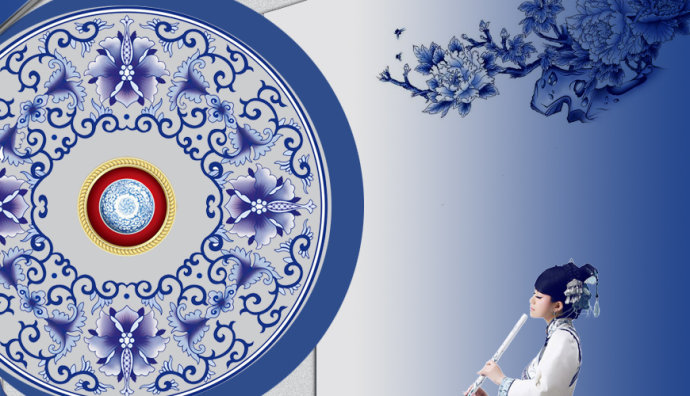
不用怀疑!
中华民族的祖先是十分聪明,十分有智慧的。陶瓷~从泥巴~陶~瓷这发展过程有多长时间,没有人知道,一万年以上的演变是有可能的,据我现有的一件藏品,上绿釉的红泥陶罐,就是新石器时代的产物,因为红泥陶器只有那个时候有,新石器时代就有陈设的陶罐,你说演变到唐朝是多少时间。起码有五六千年吧,所以,唐朝出现青花瓷,青花釉里红瓷,等等釉下彩瓷不足为奇,唐三彩瓷就有红色,蓝色,黄色,绿色,白色。这是大自然的固有本色~红色是鲜血,蓝色是天空,黄色是大地,绿色是植物,白色是水。从这五个色彩可以千变万化,斑斓万彩。
这些色彩缤纷的变化,在中华民族祖先那里使用得滚瓜烂熟,早已超越了地球上的其他人种。只不过中华的大地这个土地是一个多灾多难,多战乱的土地,历来都是分裂~统一的在循环,但是,也符合人类历史螺旋发展的规律。在1949年之前的时间长流,中华民族祖先的智慧由于很多复杂的原因,导致了流失,记载不全,堙灭,给外人掳掠,时到今日很多东西是无知的,不解的,不全面的等等。
还有,面对中华民族浩瀚如烟的古代遗留,有能力的人,有眼光的人,认真的人,去研究的人,确实不多。
现在的人,面对祖先留下来的东西,有的熟视无睹,有的什么都不懂,有的自私自利,有的卖身求荣,有的不懂装懂信口开河,有的真假不分一律是假等等。
真正像此篇文章能说清楚的,敢说清楚的人不多。导致大量文物毁灭。罪过罪过!
几年前,北京学者、大收藏家孙欣出了本研究邢窑唐代青花瓷的书,一些收藏家与个别专家“嘘”了一阵子。其实,唐青花早已稍稍地融入一些收藏家的藏品中。
当然,在社会上,对于唐青花,不时还有争议。看不惯的总归看不惯,不信的还归不信。
相信的,收藏、保护、学习、研究。大多挂心社会问题,拥有民族责任感的人,想保护与研究的,知道社会上存有实物,时而千寻百找,时而信手拿来,更有大把的研究课题,值得不懈学习、不停探索!说大的,可称为保护古代(非物质)文化遗产的传承出点微薄之力,也可以说是在为民族文化复兴添砖加瓦!说小的,算是投资理财或是自娱自乐。
不信的人,直接说假!因为,他觉得这些与他没有半毛钱的关系。哪怕是专家,个别也是这样!
不过,实物就真实存在中华大地上!
有时候,不信还真的不行!
元青花一鸣惊人,肯定有一段时间的铺垫。那么,这段铺垫的时间是什么时间开始的呢?目前已知的起码是从唐代开始,当然,这还不确定,或许以后还会发现更早的铺垫实物及记载资料,或从汉代开始。这,当今看起来好像不着边际。
但,一切皆有可能!
当前,在社会上看到一些邢窑的青花瓷器,有带一、二字楷书刻款的,也有带六字篆书刻款的。如:“盈”、“大盈”、“翰林”、“大唐贞观年制”、“大唐贞观御用”等等阴刻款的青花、釉里红、青花釉里红的邢窑瓷器。目前,发现的邢窑瓷器有六字款的基本是二竖行篆书阴刻款,一字、二字的几乎是楷书阴刻款。
在考古发掘之前,一般专家学者认为邢窑的烧造时间很短,如:“邢窑始于初唐、盛于中唐、衰于晚唐、五代之后消声匿迹”、“五代以后无邢窑”、“宋元无邢窑”等。“经考古发掘证实邢窑的烧造始于北朝、发展于隋朝初唐、兴盛于盛唐、中唐和晚唐前期、唐末和五代转入低潮,复兴于宋、延续至金元、甚至到明清,长达一千多年。”
“邢窑白瓷在唐代陶瓷中,烧成温度是最高的。经中国科学院上海硅酸盐研究所测试,邢窑陶瓷烧成温度一般在1320+20.9度,个别标本高达1380度,在当时能烧到如此高的温度,其科技含量是极高的!邢窑白瓷比越窑青瓷高100度,”厉害之极。.
目前,发现的这些邢窑青花瓷器,是在邢窑白瓷上绘制青花、釉里红、青花釉里红,再浸釉后入窑烧制的,属于釉下彩。这些邢窑瓷器大多氧化较好,无贼光火气,釉光莹润,发色也都比较纯正稳定,釉面大多有脏泡、破泡等老化痕迹,品相与老相感也都较好,手感也都较为润滑。从眼学的角度来说,这些邢窑陶瓷都是老的。大胆地说这些邢窑的青花、釉里红、青花釉里红陶瓷都是唐代时期邢窑所烧制的!
经查唐朝(618年—907年),是继隋朝之后的大一统中原王朝,共历二十一帝,享国二百八十九年。时间跨度较长!
这些邢窑陶瓷真的能到唐代吗?
唐朝共289年,是哪一朝烧制的呢?
会不会是后朝仿前朝的呢?
会是现代仿品吗?
相信拥有这类藏品的部分收藏家和很多见过此类藏品照片的收藏家心中大都没谱!当然,还估计一些专家、学者对这类邢窑陶瓷心中也没有底!
因为,目前尚未查阅到记载资料,也没找到馆藏实物,以及考古发掘出来的实物依据!
带着这些疑问,选一些邢窑青花瓷,送艺术品年份检测仪进行检测,借助科技检测加以确定:
1.邢窑牙白釉青花敞口双兽吐舌耳草叶纹瓶(图1),高20.8厘米,口径7.6厘米,微敞口,稍束颈,颈部饰双兽首吐舌耳,溜肩,肩部饰有四处青花草叶,草叶下方修有三条台阶式的规整环瓶纹,给整器增添了不少美感。鼓腹,腹部正背二面各饰有花形青花草叶,青花发色灰蓝,纯正,稳定,稍有浑散现象,似含有微量苏料发色的感觉。纹饰简洁,随意雅致。整器施牙白釉,釉面乳浊温润,开细小透明纹片。八字脚,脚边留有浸釉时四个指头拿捏的痕迹,平底,修胎精巧、规整,胎体坚致。底部中间刻有二竖行六字篆书款:“大唐贞观年制”,经放大镜仔细观看,字迹规整、刻工流畅,不过笔画刻线边缘带有崩口,这是生胎较干燥时刻划的现象,边上还有个别地方沾有刻出来的细小胎渣,胎渣紧沾胎体,抠不下来。这说明是入窑前先刻的款,后再入窑烧制,排除是烧好后再刻款。釉光莹润、手感润滑、氧化明显,综上眼鉴此瓶为唐代邢窑烧制的陶瓷器物。
送艺术品年份检测仪检测是630年烧制的,与眼鉴年代相符。630年也是唐太宗李世民贞观4年,与刻款年份吻合。经眼鉴与科技检测相结合,证实这是一件地地道道的唐代邢窑青花瓷瓶!
2.邢窑白釉洗子口瓜棱云鹤草地纹花觚(图2),高22.8厘米,敞口束颈,颈部稍长起六瓜棱,微溜肩、鼓腹、束脚,施满釉,牙白釉色,开细小透明纹片,腹部前后二面分别用青花绘一只正在迈步前行的曲颈白鹤,神情专注,白鹤的长喙中有一小撇点,像是刚刚叼到一条小鱼,空白处可见几朵小流云,代表空旷无垠,线条简练、流畅、灵动,三株水草表示白鹤正在沼泽地觅食,与白鹤长喙叼小鱼相呼应。这是艺术来源于生活,工匠艺术表现力简单明了。青花发色蓝中带灰,典雅,短束脚,脚部有五指印纹,是浸釉时拿捏留下的。平底,底部有细细环纹,中间刻有二竖行六字篆书款:“大唐贞观年制”,字迹规整,底胎洁白细腻不沾灰,说明有匣砵盛烧,手感润滑,结合整体,此瓶眼鉴初定为唐代邢窑烧制的陶瓷器物。
经艺术品年份检测仪检测是633年烧制的,与眼鉴年代吻合。633年也是唐太宗贞观7年,在刻款年号的范围之中。经眼鉴与科技鉴定相结合,证实此瓶是唐代贞观年期间的官方用物。目前,因尚未查到唐代是否有设置官窑的记载资料,推测是官方或宫廷向邢窑定制官方或宫廷(皇家)用物。
3.邢窑白釉敞口青花螺旋花纹瓶(图3),高21.8厘米,口径7.5厘米,敞口、束颈稍长、溜肩、腹似枣形,腹部前后两面分别画有一朵螺旋纹花、花冠二层点点、看似茸毛,像在表达一朵盛开的蒲公英。束脚,脚部有五枚指头印痕,这是当时浸釉留下的瑕疵痕迹。平底,修胎规整,中间刻有六字篆书款:“大唐贞观年制”字迹清晰简练,笔画力度恰到好处,整体施牙白釉,釉面开细小片纹,釉光莹润,手感润滑,初鉴为唐代邢窑陶瓷器物。送艺术品年份检测仪检测是634年烧制的,与眼鉴年代相符。634年也是唐太宗贞观8年,在刻款年号范围内。从而证实本件邢窑白釉青花瓶是唐代贞观年间烧制之物。
4.邢窑白釉“翰林”刻款短流青花鸡冠花纹执壶(图4),高21.6厘米,敞口束颈,弦纹溜肩,肩部有短流,对面贴有执柄,满釉,壶身两面分别饰以三朵大写意鸡冠花,插在卷草纹上,既突出了美艳的花朵,也巧妙地化去丛身的繁笔,又似飘在空中,给人以高高在上的感觉,实际是工匠隐有祝福主人早日当上高官,鸡冠花除了代表爱情外,还有升官的意思,官上加官、在这里有连升三级的寓意。两面构图类似,寥寥几笔,漂亮活现,青花发色淡雅,蓝中带灰,用二十倍放大镜观看者青花发色,似含有微量苏料的特征,在500倍显微镜下可见稀疏的通透晶莹的气泡、破泡、脏泡,这是釉层老化的特征。平底细滑,修胎规整,可见浅浅螺旋纹,刻有竖行楷书“翰林”二字,脚边依稀可见在浸釉时五指拿捏留下的指头痕迹,釉面开细如蜻蜓翅纹的透明纹片,莹润,细腻,光滑。综上所述,眼鉴此壶应是唐代邢窑陶瓷器物。经艺术品年份检测仪检测是637年烧制的,与眼鉴年代相吻合,637年也是唐太宗贞观11年。因此,证实此瓶是唐代官方或宫廷定制之物。这里的“翰林”可以是官衔,也可以是机构,如“翰林院”。
经查一些资料显示:“翰林是中国古代官名。它的由来可以一直追溯到唐朝,唐玄宗时,从文学侍从中选拔优秀人才,充任翰林学士,专掌内命由皇帝直接发出的极端机密的文件。清代沿用明代制度,设置翰林院,主管编修国史,记载皇帝言行的起居注。”
事实上“翰林”是不是在唐玄宗当皇帝期间设置的呢?
唐玄宗李隆基的在位时间是712年至756年,而这件刻款“翰林”的执壶经科技检测是637年烧制的,属于唐太宗贞观11年的陶瓷器物。这个时间,最少比唐玄宗早了75(---119)年。从而说明唐玄宗只是传承或重视“翰林”官位职能或机构而已,“翰林”并非是唐玄宗时期才开始设置的。
有了科技年份检测,觉得很多观念必须更新、很多历史必须改写!
5.邢窑白釉“盈”字款敞口弦纹青花白描牡丹花纹类玉壶春瓶(图5),高22.8厘米,口径8.8厘米。敞口束颈,整器施牙白釉,釉面温润,开细细片纹,纹若蜻蜓翅,釉光晶莹,二道环弦纹,中间有草叶纹,瓶体似玉壶春瓶,只是颈部稍粗,腹部前后二面各绘有一朵青花白描牡丹纹,牡丹花中之王,香艳有加,代表富贵。发色灰蓝,均匀典雅,纯正。束脚,脚部留下五枚指头印纹,是拿捏此瓶浸釉时留下的瑕疵。这是唐代邢窑陶瓷的工艺特征之一,也是鉴定唐代邢窑瓷器的要点之一。平底,中间稍偏右刻有楷书款“盈”字,字迹整洁,笔画流畅,整体细腻润滑,初鉴为唐代邢窑之物。经艺术品年份检测仪检测是640年烧制的,640年也是唐太宗贞观14年。
6.邢窑白釉“大盈”款青花花卉纹葫芦瓶(图6),高22厘米,作工规整,满釉,牙白釉色,下体双面分别饰有一朵青花花卉,笔简意骇,浸釉时脚部留有五指痕迹,平底,可见浅浅细细的螺旋纹,中间刻有竖行二字楷书“大盈”款,手感细腻平滑,应是唐代邢窑陶瓷器物。经查,“大盈”款识是百宝大盈库的缩写标志,历史上大盈库曾被称为中藏“”、“内藏”、“禁藏”、“内库”、“中库”、“左藏”、“右藏”等相关名称,都与(唐代)皇帝私藏有关。送艺术品年份检测仪检测是662年,与眼鉴年代吻合,662年也是唐高宗龙朔2年。某专家在前央视鉴宝时说葫芦瓶是康熙以后才出现的,笔者曾写一篇《发现北宋官窑葫芦瓶》进行反驳,现在又发现唐代邢窑陶瓷的青花葫芦瓶,这件662年烧制的青花葫芦瓶,比北宋995年烧制的官窑葫芦瓶早了333年!从其工艺特征分析,这件邢窑青花葫芦瓶也非首创。说明古代工匠将葫芦瓶作为一种好寓意的传统产品,传承在历史长河中。
7.邢窑白釉“盈”字款青花鸡冠花纹双系罐(图),高21厘米,直口外撇,溜肩,颈部与肩部贴有二系,体似橄榄状,通体施牙白釉,釉面温润,强光下可见釉面开细如蜻蜓翅纹片、以及釉下拉坯纹。罐体二面各饰有二朵写意青花鸡冠花,插在卷草纹上,似飘在空中。花朵惟妙惟肖,笔法随意流畅。束脚,脚部可见五指捏拿本罐浸釉时留下的指头痕迹,平底,中间稍偏右下刻有楷书“盈”字款,手感平滑,初鉴为唐代邢窑陶瓷罐。送艺术品年份检测仪检测是693年,经查693年是武周则天顺圣皇后长寿2年。此罐的青花鸡冠花是二朵,与637年的短流执壶三朵大写意鸡冠花,比较类似,只是少了一朵鸡冠花。用56年的时间传承,是在精简图饰吗?还是在传承中革新?
近期在社会上看到唐代贞观年间邢窑等窑口烧制的青花瓷系列的重出江湖,比元青花起码提前了700年!经过700年的铺垫和厚积,成就了元青花的一鸣惊人与一夜成名!
看了上述这七件唐青花的实物力证,相信大家对唐青花有了更深的理解。在高温1350至1380度(左右)烧制的,才是真正意义上的青花瓷,当然,还必须是釉下的青花(图8)。如果是在1100度或以下烧制的,从某种意义上说,这类青花还是不那么成熟的青花。如:在“唐三彩”范畴里,有一些纯青花(蓝)彩(多见蓝点斑及整片蓝彩)是将青(蓝或钴)料混在釉里的,与釉下青花是区别的。觉得蓝(钴)釉彩与釉下彩青花不能混为一谈!
为了更深入地了解青花瓷,有必要看看一些资料记载的“唐三彩”烧制工艺:“唐三彩的制作工艺十分复杂。首先要将开采来的矿土经过挑选、舂捣、淘洗、沉淀、晾干后,用模具作成胎入窑烧制。唐三彩的烧制采用的是二次烧成法。从原料上来看,它的胎体是用白色的粘土制成,在窑内经过1000-1100℃的素烧,将焙烧过的素胎经过冷却,再施以配制好的各种釉料入窑再烧,其烧成温度约800℃。在釉色上,利用各种氧化金属为呈色剂,经煅烧后呈现出各种色彩。”
这则资料说明了“唐三彩”是彩釉(图9),并非是釉下彩!
另外,一些资料显示:
一.“通过对扬州出土瓷片的胎、釉、彩进行研究,并对唐代巩县窑的物质和技术条件进行分析,初步断定唐青花的产地是河南巩县窑。近些年来在巩县窑窑址出土了少量青花瓷标本,由此进一步确认了唐青花的产地就在河南巩县窑。”
二.“唐青花经过初创期以后,并没有迅速发展起来,而是走向了衰败”。
经过对邢窑等窑青花瓷的深入学习、探索与研究,觉得上述这二个词条的观点值得商榷!
因此,巩县窑唐代烧制的“唐三彩”范畴里的蓝釉彩(点蓝彩)是否是属于青花瓷的范畴?觉得还需继续探索与研究!
邢窑唐青花的烧制直至何时才开始衰落,也必须继续探寻。不过,社会上发现宋代一些青花瓷藏品,这说明宋代还有个别窑口在延续烧制青花瓷。在宋代,青花瓷虽然没有得到官方的推崇,也没有得到皇帝的青睐,只能是在民间默默地做了铺垫。到了元代,才有了元青花的一鸣惊人!
中国古代青花瓷艺术真是博大精深!想追寻、探索青花瓷烧制源头,看来并不那么简单,正当拨开一层面纱,又凸现另一层迷雾,真是高深莫测!
中国工艺技术很多都是独门的,不少技艺被宫廷垄断,被宫廷垄断的民间很多听都没有听过,更谈不上看见或拥有,因此,在改朝换代等事件中很容易失传。
一些民间的技艺,其配方或制作方法都是秘不示人的,民间工艺技术在传承过程中,都是“传子传媳不传女”。
这样的传承方法,过于保密、非常不利于传承,也不利于发展。在朝代更迭或发生某种事件的时候,不少工艺技术因而中断或失传。唐代邢窑青花、釉里红、青花釉里红是朝廷垄断的,在改朝换代的时候,这些技艺可能就失传了。
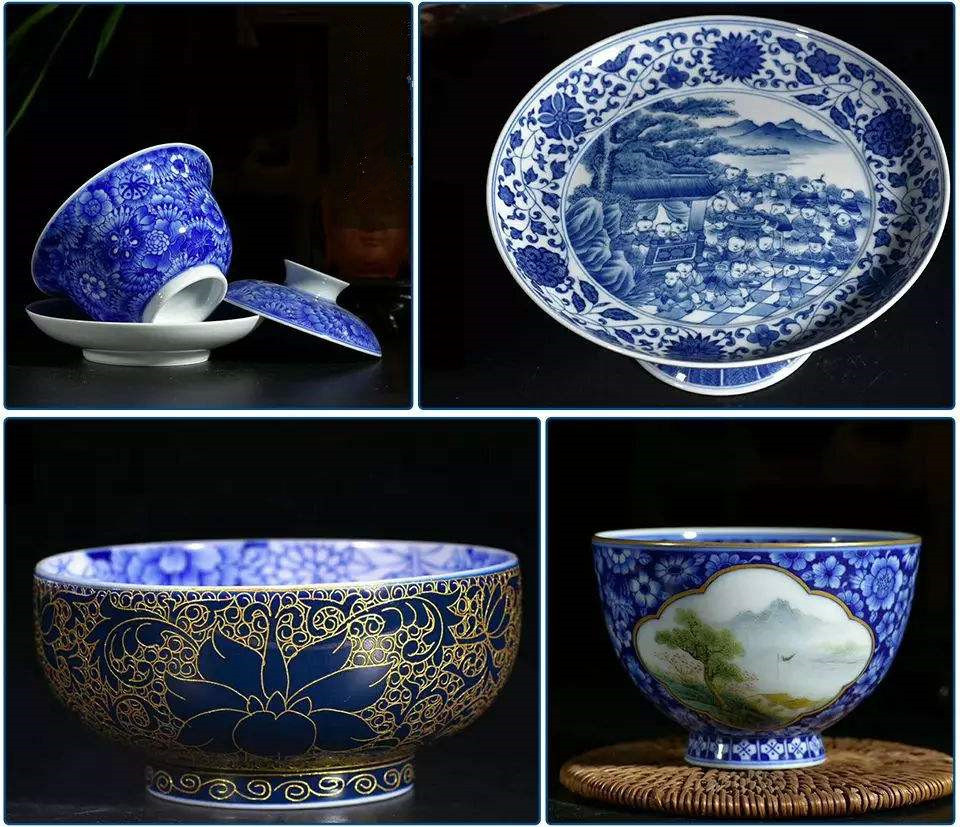
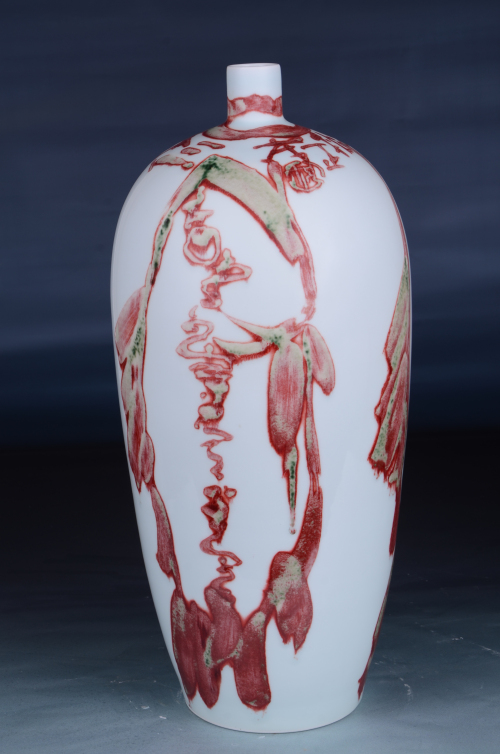
No doubt!
The ancestors of the Chinese nation were very intelligent and wise. No one knows how long the development process of ceramics from mud to pottery to porcelain has been. It is possible to evolve for more than 10000 years. According to my existing collection, the red clay pottery with green glaze is the product of the Neolithic age, because the red clay pottery was only available at that time, and there were decorated pottery pots in the Neolithic age. How long did you say it evolved to the Tang Dynasty. At least five or six thousand years. Therefore, it is not surprising that blue and white porcelain, blue and white underglaze red porcelain and so on appeared in the Tang Dynasty. The tri colored porcelain of the Tang Dynasty has red, blue, yellow, green and white. This is the natural color of nature ~ red is blood, blue is the sky, yellow is the earth, green is plants and white is water. From these five colors, you can change and be colorful.
These colorful changes were well used by the ancestors of the Chinese nation and have long surpassed other races on the earth. But the land of China is a land full of disasters and wars. It has always been a cycle of division and unity. However, it also conforms to the law of the spiral development of human history. For a long time before 1949, the wisdom of the ancestors of the Chinese nation was lost due to many complex reasons, incomplete records, destroyed and plundered by outsiders. Up to now, many things are ignorant, incomprehensible and incomplete.
In addition, in the face of the vast ancient legacy of the Chinese nation, there are really not many people with ability, vision, seriousness and research.
Nowadays, some people turn a blind eye to what their ancestors left behind, some don't understand anything, some are selfish, some sell themselves for glory, some don't know, pretend to understand, and some are false regardless of true or false.
There are not many people who can speak clearly like this article. It led to the destruction of a large number of cultural relics. Sin, sin!
A few years ago, Sun Xin, a scholar and collector in Beijing, published a book on the study of blue and white porcelain in Xing kiln in the Tang Dynasty. Some collectors and individual experts "shush" for a while. In fact, Tang Qinghua has already been slightly integrated into some collectors' collections.
Of course, in society, there are still disputes about Tang Qinghua from time to time. Those who don't like it always don't like it, and those who don't believe it still don't believe it.
Believe, collect, protect, learn and research. Most people who are concerned about social problems and have a sense of national responsibility want to protect and study. They know that there are real objects in the society. Sometimes they look for them, and sometimes they bring them. There are a large number of research topics, which are worthy of unremitting learning and exploration! To say big, it can be called to protect the inheritance of ancient (intangible) cultural heritage. It can also be said to be making contributions to the rejuvenation of national culture! Small, it can be regarded as investment and financial management or self entertainment.
If you don't believe it, just say false! Because he felt that these had nothing to do with him. Even experts, individual is the same!
However, the real object exists on the land of China!
Sometimes, I can't believe it!
Yuan Qinghua's blockbuster must have paved the way for some time. So, when did this paving time begin? At present, it is known at least from the Tang Dynasty. Of course, this is still uncertain. Perhaps earlier bedding materials and records will be found in the future, or from the Han Dynasty. This seems irrelevant today.
But everything is possible!
At present, there are some blue and white porcelain of Xing kiln in the society, including those with one or two characters of regular script and those with six characters of seal script. Such as "Ying", "Daying", "Hanlin", "Datang Zhenguan annual system", "Datang Zhenguan imperial use" and other Yin engraved blue and white, underglaze red, blue and white underglaze red Xing kiln porcelain. At present, there are six characters of Xing kiln porcelain found, which are basically two vertical line seal Yin engraved, and one and two characters are almost regular script Yin engraved.
Before archaeological excavation, general experts and scholars believed that the firing time of Xing kiln was very short, such as: "Xing kiln began in the early Tang Dynasty, flourished in the middle Tang Dynasty, declined in the late Tang Dynasty and disappeared after the Five Dynasties", "no Xing kiln after the Five Dynasties", "no Xing kiln in the song and Yuan Dynasties", etc. "Archaeological excavations have confirmed that the firing of Xing kiln began in the Northern Dynasty, developed in the early Tang Dynasty, flourished in the prosperous Tang Dynasty, the middle Tang Dynasty and the early stage of the late Tang Dynasty, turned to a low tide in the late Tang Dynasty and the Five Dynasties, and revived in the Song Dynasty, continued to the Jin and Yuan Dynasties, and even to the Ming and Qing Dynasties for more than 1000 years."
"The firing temperature of Xing kiln white porcelain is the highest among the ceramics of the Tang Dynasty. According to the test of Shanghai Institute of silicate, Chinese Academy of Sciences, the firing temperature of Xing Kiln Ceramics is generally 1320 + 20.9 degrees, and individual specimens are as high as 1380 degrees. At that time, it can burn to such a high temperature, and its scientific and technological content is very high! Xing kiln white porcelain is 100 degrees higher than Yue Kiln celadon," which is extremely powerful
At present, the blue and white porcelain found in Xing kiln is painted with blue and white, underglaze red and blue and white underglaze red on the white porcelain of Xing kiln, and then soaked in glaze and fired in the kiln. It belongs to underglaze color. Most of these Xing kiln porcelain have good oxidation, no thief light and fire, the glaze is bright and lustrous, and the hair color is relatively pure and stable. Most of the glaze has aging traces such as dirty bubbles and broken bubbles. The appearance and old look are also good, and the hand feel is relatively smooth. From the perspective of Ophthalmology, these Xing kiln ceramics are old. Boldly speaking, the blue and white, underglaze red and underglaze red ceramics of these Xing kilns were fired by Xing kilns in the Tang Dynasty!
According to the investigation, the Tang Dynasty (618-907) is a unified Central Plains Dynasty after the Sui Dynasty, with a total of 21 emperors and 289 years. Long time span!
Can these Xing Kiln Ceramics really reach the Tang Dynasty?
The Tang Dynasty lasted 289 years. Which dynasty fired it?
Could it be that the latter Dynasty imitates the former?
Can it be a modern imitation?
I believe that some collectors who own such collections and many collectors who have seen photos of such collections have no spectrum in their hearts! Of course, it is estimated that some experts and scholars have no idea about this kind of Xing Kiln Ceramics!
Because, at present, the recorded materials have not been consulted, and the physical objects in the collection and the physical basis of archaeological excavation have not been found!
With these questions, select some blue and white porcelain from Xing kiln and send it to the art year detector for testing, which will be determined with the help of scientific and technological testing:
1. Xingyao tooth white glaze blue and white open double animal tongue ear grass leaf pattern bottle (Fig. 1), 20.8 cm high, 7.6 cm in diameter, slightly open, slightly tied neck, double animal head tongue ear decorated on the neck, sliding shoulder, four blue and white grass leaves decorated on the shoulder, and three stepped regular ring bottle patterns are built under the grass leaves, which adds a lot of beauty to the whole device. The belly is bulging, and the front and back sides of the abdomen are decorated with flower shaped blue and white grass leaves. The blue and white hair color is gray blue, pure, stable, and slightly muddy, which seems to contain a trace of Su material hair color. The decoration is simple, casual and elegant. The whole appliance is applied with white glaze, the glaze is turbid and warm, and small transparent lines are opened. The splayed feet have traces of four fingers pinching when soaking glaze. The flat bottom is exquisite and regular, and the carcass is firm. In the middle of the bottom is engraved with two vertical lines of six character seal script: "made in Zhenguan of the Tang Dynasty". After careful observation with a magnifying glass, the handwriting is regular and the carving is smooth. However, there is a crack on the edge of the stroke scribed line, which is a phenomenon when the raw tire is dry. There are some small tire residues engraved on the edge, which are tightly adhered to the tire body and can not be pulled down. This shows that it is carved before entering the kiln, and then burned in the kiln. It is excluded that it is carved after burning. The glaze is bright and lustrous, the hand feels lubricated and the oxidation is obvious. In conclusion, this bottle is a ceramic ware fired in Xing kiln of Tang Dynasty.
It was fired in 630, which is consistent with the age of Ophthalmology. 630 is also the fourth year of Zhenguan of Emperor Taizong Li Shimin, which coincides with the year of engraving. Through the combination of eye detection and scientific and technological detection, it is confirmed that this is a genuine blue and white porcelain vase of Xing kiln in the Tang Dynasty!
2. Xingyao white glaze wash mouth melon ridge cloud crane grass pattern flower Gu (Fig. 2), 22.8 cm high, open and tied neck, with six melon ridges slightly growing on the neck, slightly sliding shoulders, bulging belly and binding feet, full glaze, white glaze, small transparent patterns, blue and white painting on the front and rear sides of the abdomen, a curved neck white crane walking forward, with a focused expression, and a small apostrophe in the long beak of the white crane, It's like just picking up a small fish. Several small flowing clouds can be seen in the blank, representing the boundlessness. The lines are concise, smooth and flexible. The three water plants indicate that the white crane is foraging in the swamp, echoing with the white crane's long beak picking up a small fish. This is that art comes from life, and the artistic expression of craftsmen is simple and clear. Blue and white hair is blue with gray, elegant, short and tied feet. There are five finger prints on the feet, which are left when soaking glaze. It has a flat bottom, a thin ring pattern at the bottom, and two vertical lines of six character seal characters engraved in the middle: "made in Zhenguan of the Tang Dynasty". The handwriting is regular, and the bottom tire is white and delicate without dust. It shows that there is a box full of burning and the hand feels lubricated. Combined with the whole, this bottle eye is initially determined to be a ceramic ware fired in Xing kiln of the Tang Dynasty.
Detected by the art year detector, it was fired in 633, which is consistent with the age of Ophthalmology. 633 is also the 7th year of Zhenguan of Emperor Taizong of Tang Dynasty, which is within the scope of engraving the year number. The combination of eye identification and scientific and technological identification confirmed that this bottle was an official object during the Zhenguan year of the Tang Dynasty. At present, since there are no records on the establishment of official kilns in the Tang Dynasty, it is speculated that the official or court customized official or court (Royal) objects from Xing kiln.
3. Xingyao white glaze open blue and white spiral pattern bottle (Fig. 3), 21.8 cm high and 7.5 cm in diameter, has an open, slightly long neck, sliding shoulders and a jujube like belly. The front and back sides of the abdomen are painted with a spiral pattern flower and two layers of dots in the corolla, which looks like fluffy, like expressing a blooming Pugongying. There are five finger marks on the feet, which are the defect marks left by glaze dipping at that time. Flat bottom, regular tire repair, six character seal script engraved in the middle: "made in Zhenguan of the Tang Dynasty" has clear and concise handwriting, and the stroke strength is just right. The tooth white glaze is applied as a whole, and the glaze has fine small patterns. The glaze is shiny and smooth, and the feel is lubricated. It was first recognized as a ceramic artifact of Xing kiln in the Tang Dynasty. It was fired in 634, which is consistent with the age of Ophthalmology. 634 is also the 8th year of Zhenguan of Emperor Taizong of Tang Dynasty, which is within the range of engraved year numbers. This proves that the white glazed blue and white vase in Xing kiln was fired during the Zhenguan period of the Tang Dynasty.
4. Xingyao white glaze "Hanlin" engraved short flow blue and white cockscomb pattern holding pot (Fig. 4), 21.6cm high, open neck, string pattern sliding shoulder, short flow on the shoulder, handle pasted on the opposite side, full glaze, three freehand cockscomb flowers are decorated on both sides of the pot body, inserted on the rolling grass pattern, which not only highlights the beautiful flowers, but also skillfully removes the numerous pens on the body, and seems to float in the air, It gives people the feeling of being superior. In fact, the craftsman implicitly wishes the master to become a senior official as soon as possible. Cockscomb flower not only represents love, but also means promotion. Adding an official to an official means three levels in a row. The composition on both sides is similar, with only a few strokes. It is beautiful and vivid. The blue and white hair color is light and elegant, with gray in blue. The blue and white hair color of the viewer with a 20x magnifying glass seems to contain the characteristics of a trace of Su material. Under a 500X microscope, sparse transparent and crystal bubbles, broken bubbles and dirty bubbles can be seen, which are the characteristics of glaze aging. The flat bottom is fine and smooth, the tire repair is regular, and shallow spiral patterns can be seen. The word "Hanlin" in vertical regular script is engraved. The finger marks left by five fingers during glaze dipping can be seen at the foot. The glaze surface is as thin as the transparent pattern of dragonfly wing pattern, which is crystal clear, delicate and smooth. To sum up, this pot should be a ceramic ware of Xing kiln in the Tang Dynasty. Detected by the art year detector, it was fired in 637, which is consistent with the age of Ophthalmology. 637 is also the 11th year of Zhenguan of Emperor Taizong of the Tang Dynasty. Therefore, it is confirmed that this bottle was customized by the official or court of the Tang Dynasty. The "Hanlin" here can be an official title or an institution, such as the "Hanlin academy".
After investigation, some data show that: "Hanlin is an official name in ancient China. Its origin can be traced back to the Tang Dynasty. During the Xuanzong period of the Tang Dynasty, excellent talents were selected from literary attendants to serve as Hanlin bachelors, specializing in extremely confidential documents directly issued by the emperor. The Qing Dynasty followed the system of the Ming Dynasty and set up Hanlin academy, which was in charge of compiling national history and recording the daily notes of the emperor's words and deeds."
In fact, was "Hanlin" set up during the reign of Emperor Xuanzong of the Tang Dynasty?
Li Longji, Emperor Xuanzong of the Tang Dynasty, reigned from 712 to 756, and this carved "Hanlin" holding pot was fired in 637 after scientific and technological testing, belonging to the ceramic artifacts of Emperor Taizong's 11 years of Zhenguan. This time was at least 75 (- -- 119) years earlier than Tang Xuanzong. Thus, it shows that Tang Xuanzong only inherited or attached importance to the official functions or institutions of "Hanlin", and "Hanlin" was not set up in the period of Tang Xuanzong.
With the year detection of science and technology, I feel that many concepts must be updated and many history must be rewritten!
5. Xingyao white glaze "Ying" style open string pattern blue and white line drawing peony pattern jade pot spring bottle (Fig. 5), 22.8 cm high and 8.8 cm in diameter. The neck is open and tied. The whole appliance is painted with white glaze. The glaze is warm and smooth. There are thin lines. The lines are like dragonfly wings. The glaze is glittering and translucent. There are two ring string lines. There are grass leaves in the middle. The bottle body is like a jade pot spring bottle, but the neck is slightly thick. A blue and white flower is painted on the front and back sides of the abdomen. The peony pattern is painted in white. The king of peony flowers is fragrant and beautiful, representing wealth. The hair color is gray blue, uniform, elegant and pure. Bind your feet, leaving five finger prints on your feet, which is a defect left when you hold this bottle and dip it in glaze. This is one of the technological characteristics of Xing Kiln Ceramics in the Tang Dynasty, and it is also one of the key points to identify Xing Kiln Ceramics in the Tang Dynasty. The flat bottom, slightly to the right in the middle, is engraved with the word "Ying" in regular script. The handwriting is neat, the strokes are smooth, and the whole is delicate and smooth. It was first learned from Xing kiln in the Tang Dynasty. Detected by the art year detector, it was fired in 640, which was also the 14th year of Zhenguan of Emperor Taizong of the Tang Dynasty.
6. Xingyao white glaze "Daying" blue and white flower pattern gourd bottle (Figure 6), 22 cm high, neat, full glaze, tooth white glaze, two sides of the lower body are decorated with a blue and white flower, the pen is simple and frightening, five finger marks are left on the feet when soaking the glaze, the flat bottom, shallow and thin spiral patterns can be seen, and the vertical two character regular script "Daying" is engraved in the middle, with a delicate and smooth feel, It should be the ceramic ware of Xing kiln in Tang Dynasty. After investigation, "Daying" is the abbreviation of Baibao Daying library. In history, Daying library has been called "zhongzang", "neizang", "forbidden Tibet", "Neiku", "zhongku", "Zuo Zang", "Youzang" and other related names, which are related to the private collection of the Emperor (Tang Dynasty). The year of the art delivered by the detector is 662, which is consistent with the age of Ophthalmology. 662 is also the second year of longshuo, Gaozong of the Tang Dynasty. An expert said during the former CCTV treasure inspection that the gourd bottle only appeared after Kangxi. The author once wrote an article "discovering the gourd bottle of the official kiln of the Northern Song Dynasty" to refute it. Now he found the blue and white gourd bottle of the Xing Kiln Ceramics of the Tang Dynasty. The blue and white gourd bottle fired in 662 is 333 years earlier than the gourd bottle fired in the official kiln of the Northern Song Dynasty in 995! From the analysis of its process characteristics, this blue and white gourd bottle in Xing kiln is not the first. It shows that ancient craftsmen inherited gourd bottles as a traditional product with good meaning in the long river of history.
7. Xingyao white glaze "Ying" word blue and white cockscomb pattern double series pot (Figure), 21 cm high, straight mouth turned out, sliding shoulder, neck and shoulder pasted with two series, the body looks like olive, the whole body is coated with white glaze, the glaze is warm and moist, and the glaze can be seen under strong light, such as dragonfly wing pattern and glaze pull-down pattern. The two sides of the tank body are decorated with two freehand blue and white cockscomb flowers, which are inserted on the rolling grass pattern, like floating in the air. The flowers are vivid and the strokes are free and smooth. With the feet tied, you can see the finger marks left by holding the pot with five fingers when soaking the glaze. It has a flat bottom, slightly to the right in the middle, and the word "Ying" in regular script is engraved at the lower right. It feels smooth. It is a ceramic pot of Xing kiln in the Tang Dynasty. The year of delivery of works of art was detected by the detector in 693. According to investigation, 693 was the second year of longevity of the holy queen of Tianshun in Wuzhou. There are two blue and white cockscomb flowers in this jar, which is similar to the three freehand cockscomb flowers in the short flow holding pot in 637, but one cockscomb is missing. With 56 years of inheritance, is it streamlining the decoration? Or innovate in inheritance?
Recently, we have seen the development of blue and white porcelain series fired at the mouth of Xing kilns during the Zhenguan period of the Tang Dynasty
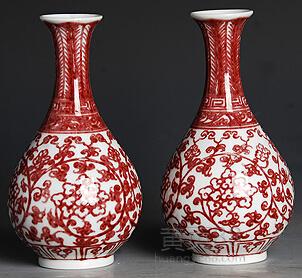


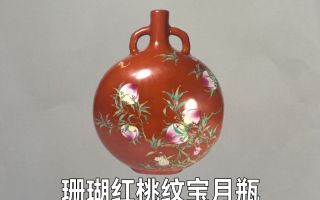
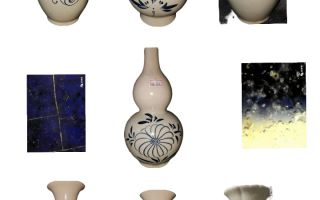
0 条 评 论 Write a Response